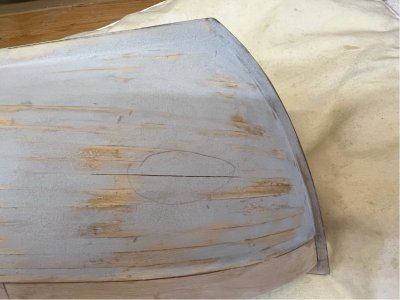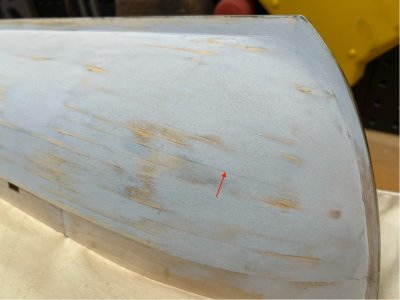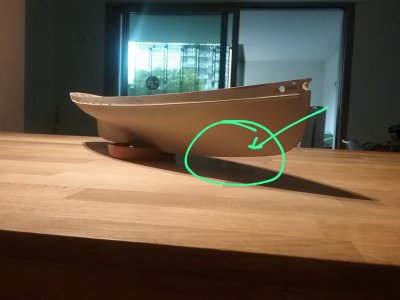Hi,
I'm building Billing's Mary Ann, a POB build. I finished the the planking at the end of May, and it has been coated with two part epoxy on the inside, and sanded and filled on the outside two weeks ago. I was just finalising a few things before starting the prime and paint stage, but when I went out to have a look at her today I find 6 or 7 longitudinal splits in the planking - the planks have separated. Yesterday was an unusually hot day here - I'm in Australia, so still winter, but 29C and a very dry wind. The hull was indoors, and out of direct sunlight, but I assume that the combo of heat and low humidity has caused my problem.
Here's a couple of photos...
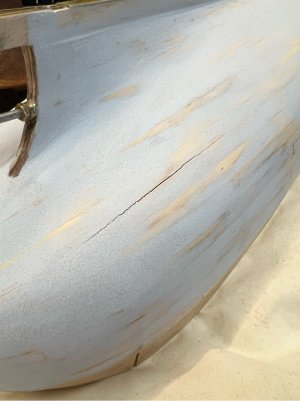
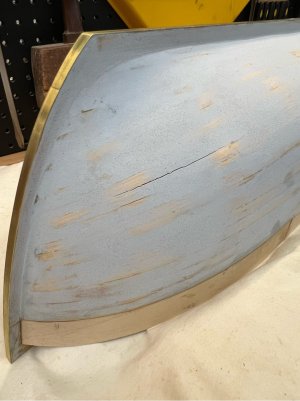
It is a single layer of planking. The timber is called Obechi in the Billing parts list. It was soaked before bending, and allowed to dry while pinned on the frame before being glued. I've used slow CA glue to the bulkheads and along the edges of the plank. Although the kit is a static display model, I am building it as functional RC model, so it will need to be watertight. I'm not sure what to do from here, other than to sand back the affected sections and capillary glue before continuing on.
Thanks for any suggestions...
I'm building Billing's Mary Ann, a POB build. I finished the the planking at the end of May, and it has been coated with two part epoxy on the inside, and sanded and filled on the outside two weeks ago. I was just finalising a few things before starting the prime and paint stage, but when I went out to have a look at her today I find 6 or 7 longitudinal splits in the planking - the planks have separated. Yesterday was an unusually hot day here - I'm in Australia, so still winter, but 29C and a very dry wind. The hull was indoors, and out of direct sunlight, but I assume that the combo of heat and low humidity has caused my problem.
Here's a couple of photos...


It is a single layer of planking. The timber is called Obechi in the Billing parts list. It was soaked before bending, and allowed to dry while pinned on the frame before being glued. I've used slow CA glue to the bulkheads and along the edges of the plank. Although the kit is a static display model, I am building it as functional RC model, so it will need to be watertight. I'm not sure what to do from here, other than to sand back the affected sections and capillary glue before continuing on.
Thanks for any suggestions...





